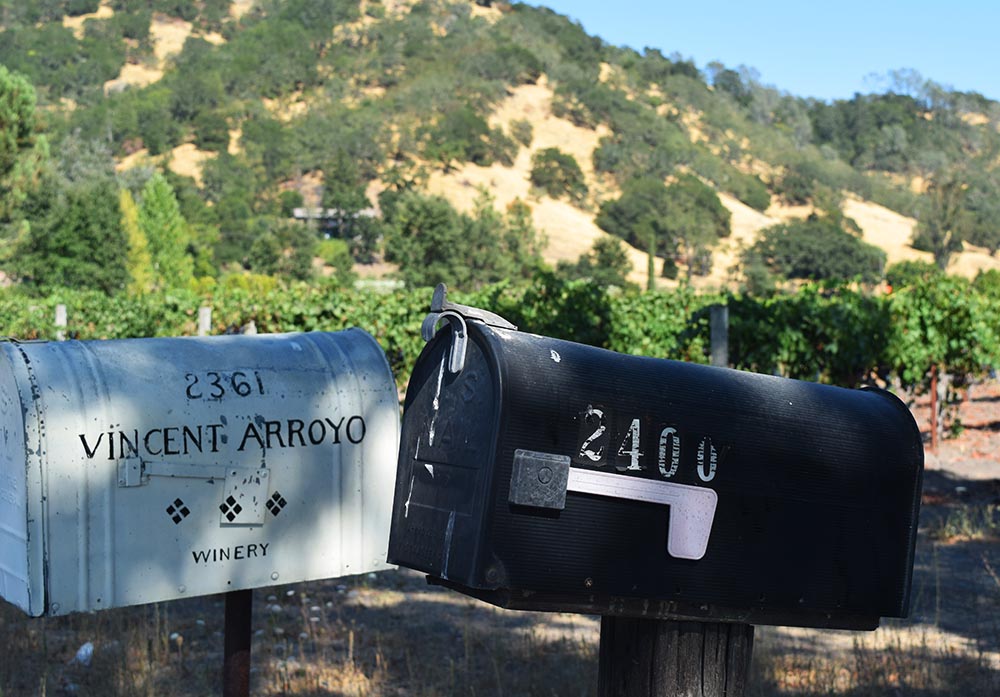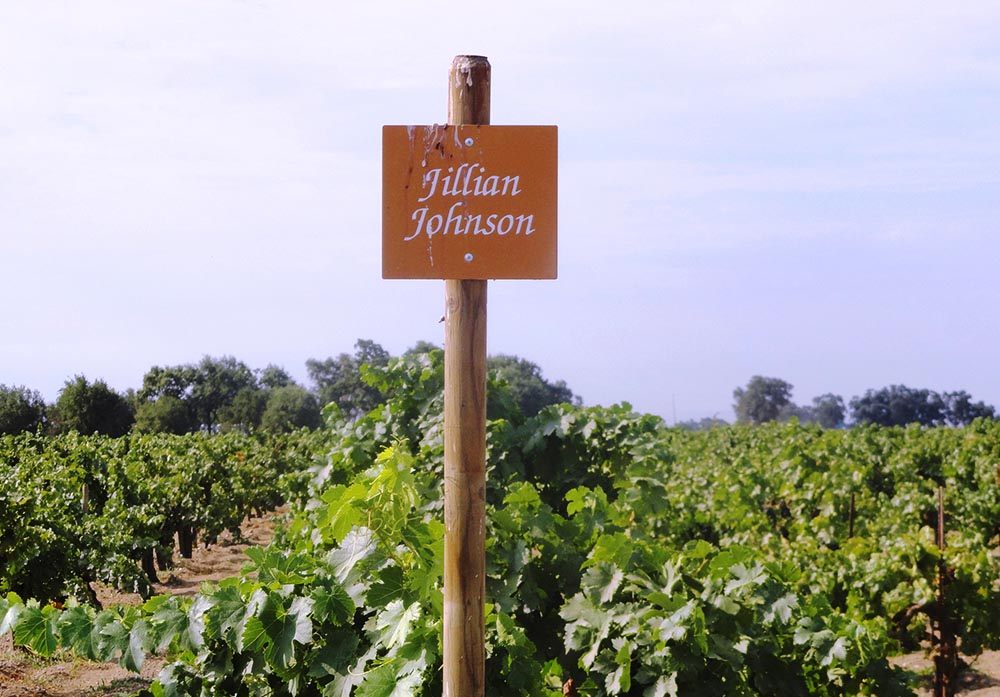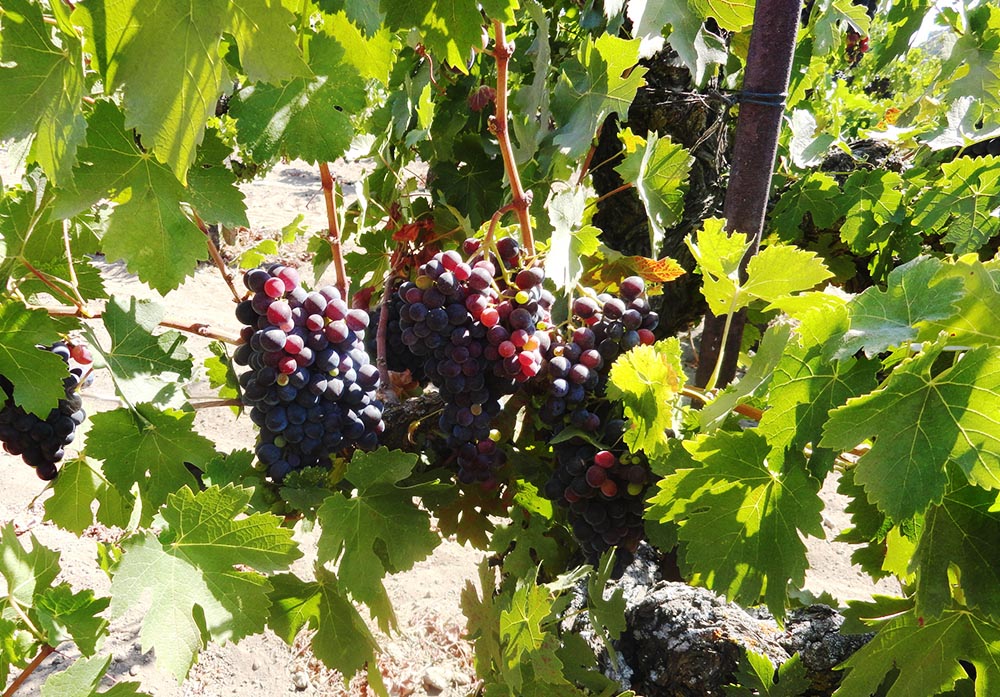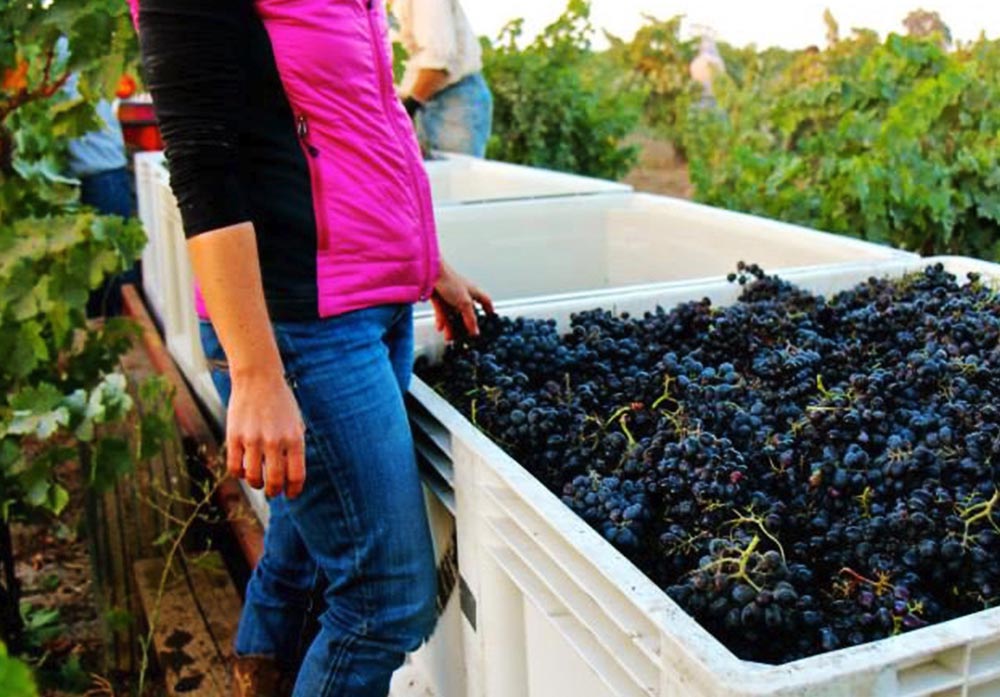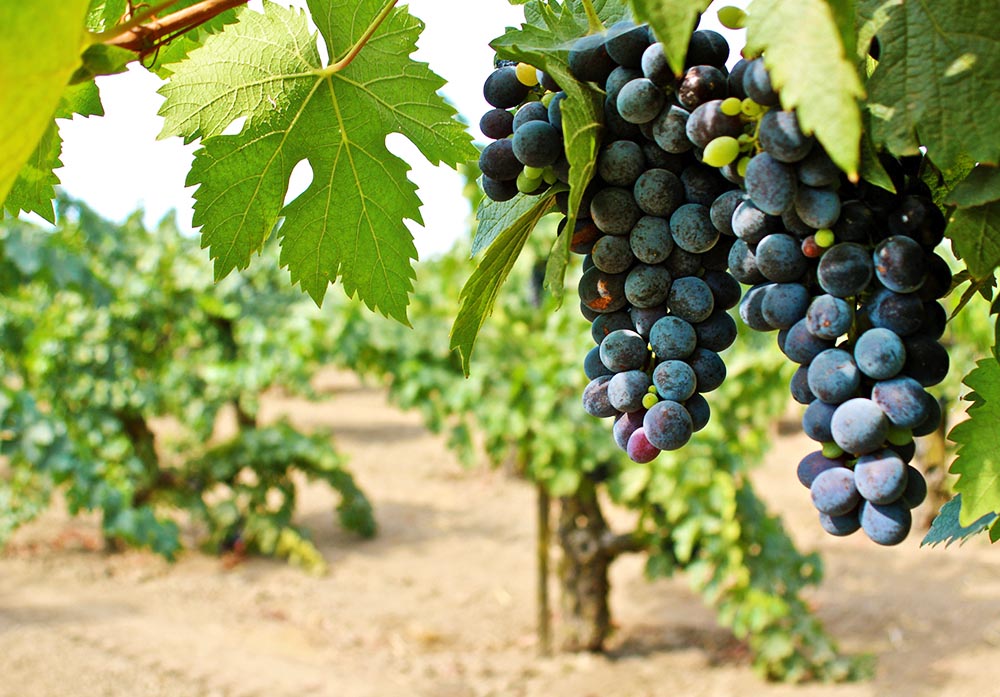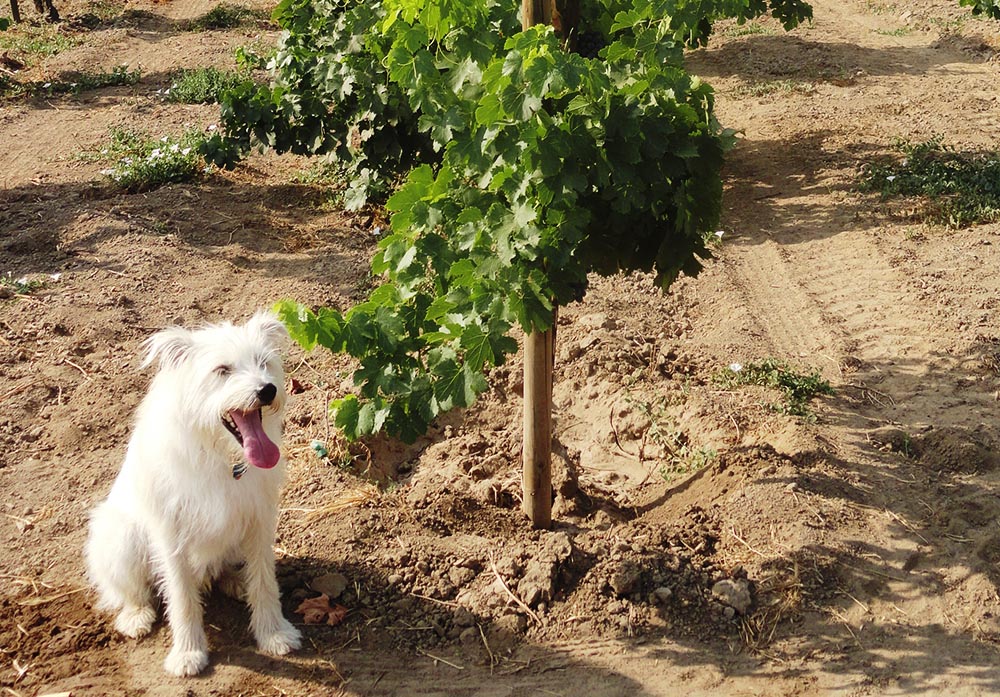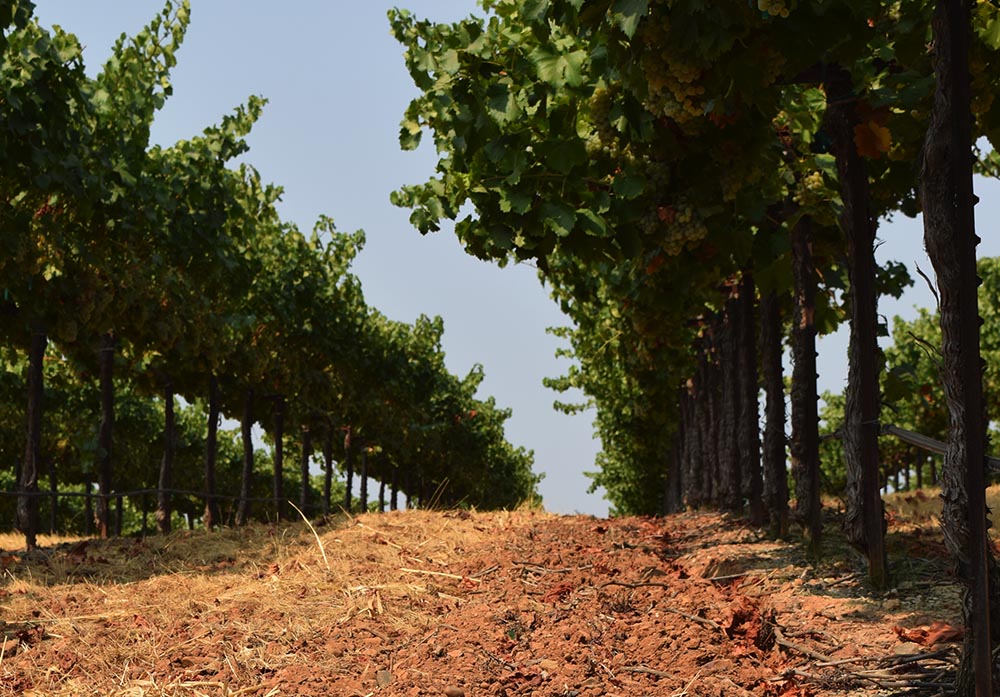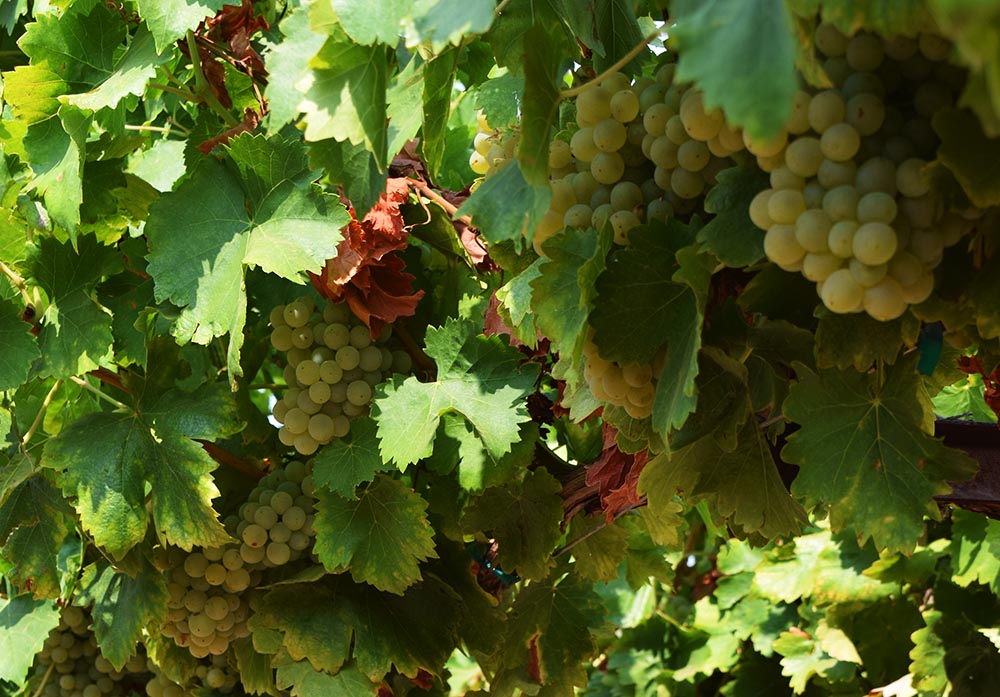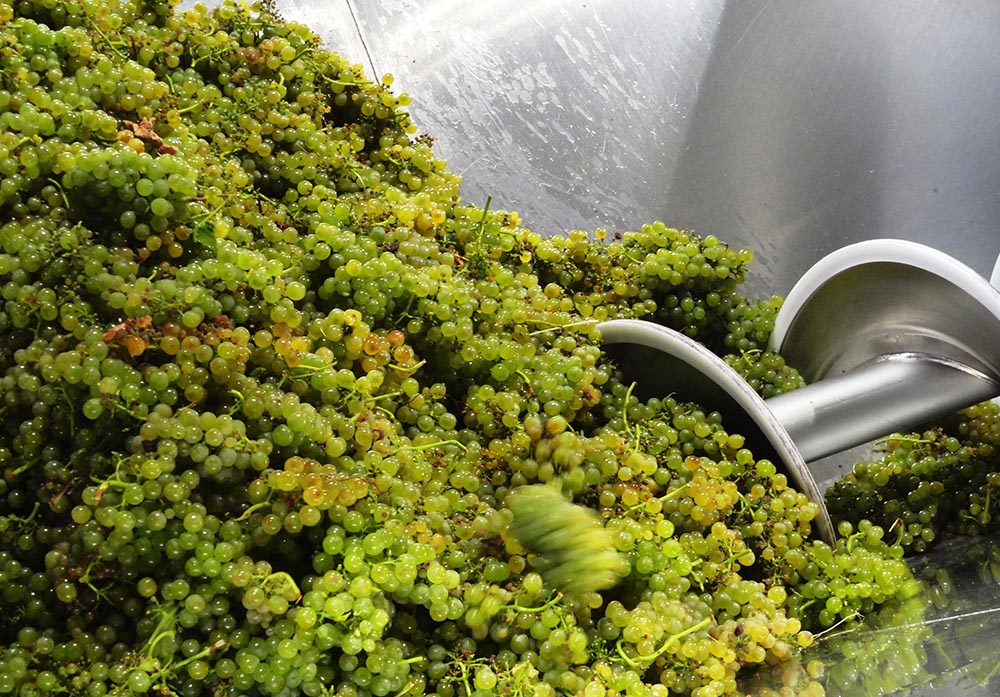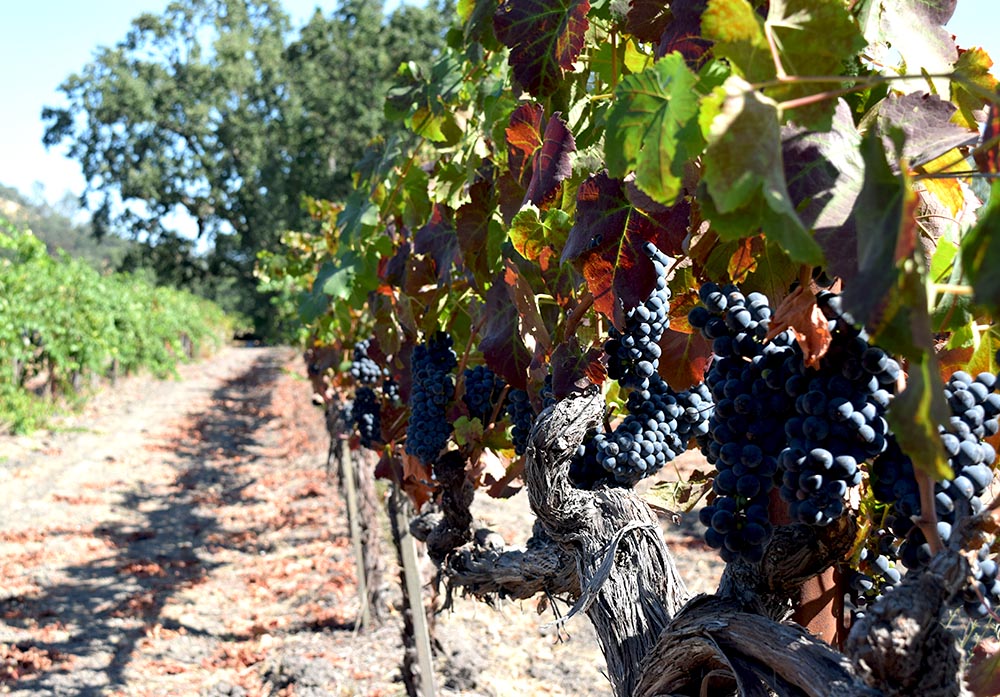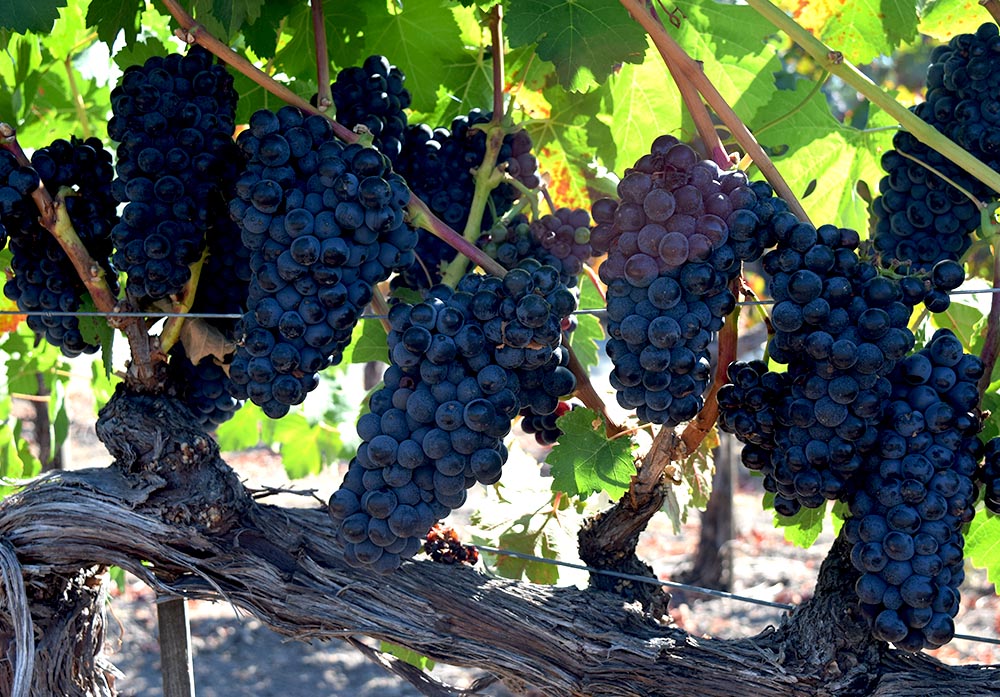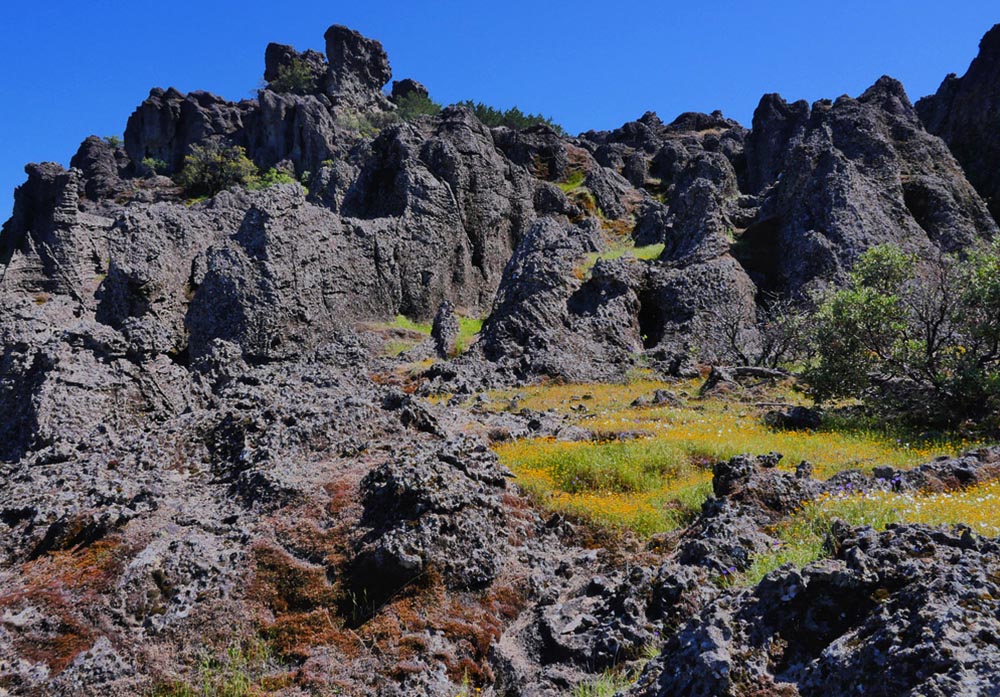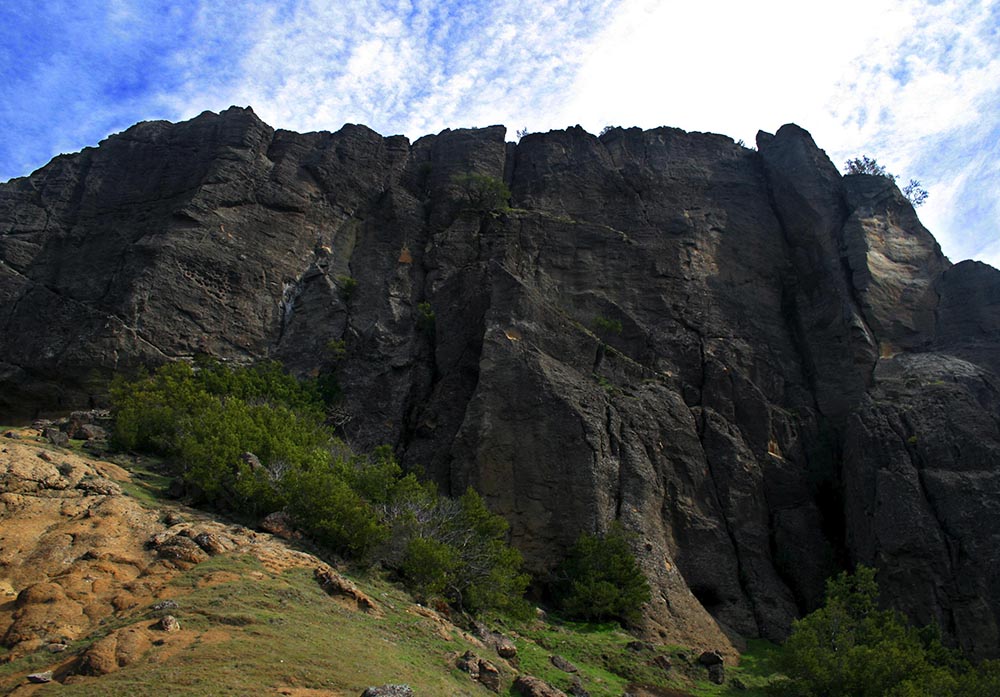Bechthold Vineyard
The Bechthold Vineyard is home to 25 acres of Cinsault, planted in 1886 by Joseph Spenker, making it the oldest Cinsault vineyard in the world. Joseph Spenker, a German immigrant, found his way west in search of gold.
Joseph Spenker, a German immigrant, found his way west in search of gold. Instead of working the mines, he worked on a farm in Stockton and started a business selling supplies to the miners. After 10 years, he saved up enough money to purchase a farm in west Lodi. William West, a successful nurseryman, talked him into planting grape cuttings from Europe. His first planting was 25 acres of Cinsault, which was called “Black Malvoisier” back then.
The Bechthold vineyard was not recognized as Cinsault, until Mrs. Bechthold (Wanda Wook, great grand daughter of Joseph Spenker), worked with UC Davis to identify these unique old vines. Al Bechthold, Wanda’s husband, farmed the vineyard starting in the 60’s and continued the legacy to 2014.
He remembers selling the fruit to Gallo and also to home winemakers throughout the country. He was ready to rip out and replant, which is when Wanda took a stand to protect this special vineyard. After it was recognized as Cinsault, winemakers lined up to purchase fruit from this historic vineyard.
The Bechthold Vineyard sits in the Mokelumne River appellation in west Lodi. This sub-AVA is distinguished by its Delta influenced Mediterranean climate and deep, fertile sandy loam soils. It was the sandy soils that allowed the Cinsault to survive the Phylloxera epidemic which wiped out 99% of the grape vines in Europe and America. The root system of the vines can penetrate these deep, sandy, well drained soils over 30 feet.
The gnarly head trained vines are dry farmed (no irrigation) and are organically farmed. The vines are planted on 10 foot by 10 foot spacing, which makes a grid-like pattern and allows for ample nutrients for each vine. The vineyard is bordered by a cement lined water canal on the south side. The vines near the canal are marked for Rose production, as they have more water and produce fruit with less concentration; perfect for Rose.
As a young vine, Cinsault can produce a very high yield, near 10 -12 tons/acre. At 130 years old, the Bechthold vines produce only 3 tons/acre, yielding concentration and depth for making red wines. This is truly a unique vineyard site and a historical landmark. Thank you Wanda for saving the Cinsault.

Truly a unique vineyard site and a historical landmark.
Clay Station Vineyard
The vineyard’s official name is Clay Station, however, internally, we call it Las Colinas Vineyard, which in English means “The Hills”.
It’s located in the Borden Ranch sub-AVA, within the Lodi AVA. The soils are categorized as Redding Gravelly Clay Loam. These soils are of volcanic origin, ending up along the eastern fringe of the great Central Valley from erosion of basalt in the high Sierras. The soils are red in hue, denoting a high mineral content. While high in minerals, they are poor soils depleted of nutrients, and perfectly suited to the high vigor, drought tolerant Grenache Blanc vines. Markus Bokisch planted the vineyard in September of 2011.
The budwood came from a dear friend of Markus’s who fell in love with a French woman, Francoise, from the Rhone Village of Rasteau. He eventually married her, moved to Rasteau, and years later, as a gift for a favor Markus had done, he shipped him the entire varietal collection from their Rhone village.Markus planted this collection on his Terra Alta Vineyard in one row he affectionately calls the “Rasteau Row.”
The Las Colinas vineyard rows run east-west, allowing the breezes that come off the delta to cool the fruit during the growing season. The trellis system is a quadrilateral cordon, spaced with eleven-foot rows, the vines within the rows are five feet apart. The vigorous vine canopy provides ample shade for gentle ripening of the grape clusters and retaining acidity during the growing season.
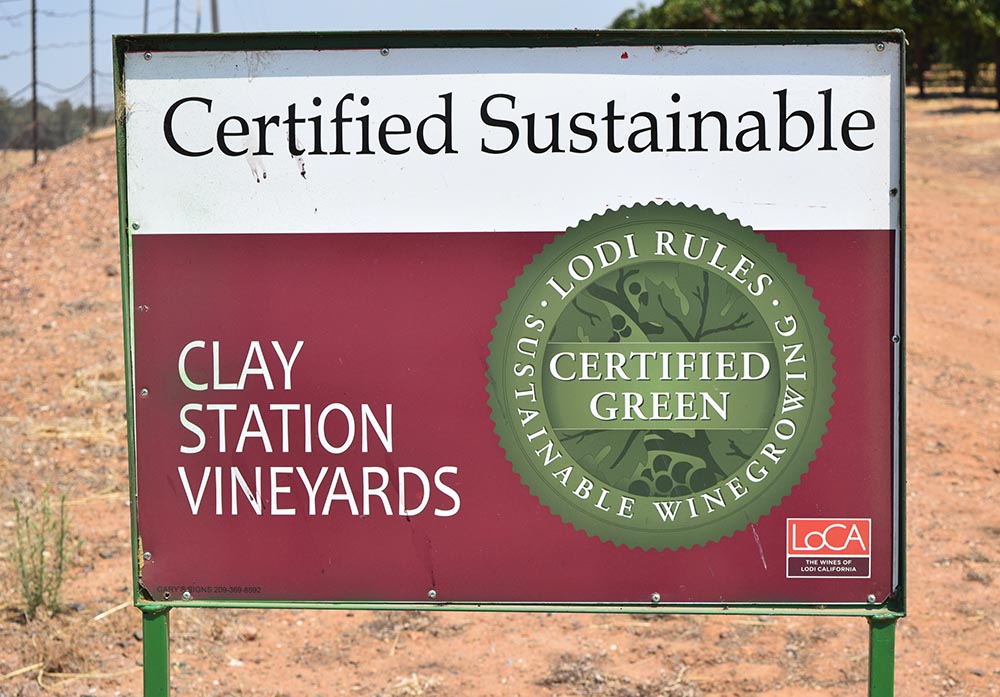
Growing high quality wine grapes with intense flavor and good natural acidity.
Guarino Vineyard
In the 1960’s Domenic Guarino, retired and purchased 8 beautiful acres at the base of the Palisades in Calistoga, the northern most part of Napa Valley.
Domenic and his wife raised four wonderful sons and together they planted vineyards on the property. In the 70’s they purchased 4 more acres to expand the vineyard. Each brother received two acres of the family property when Domenic passed.
The sons decided to plant the majority of the vineyard to Petite Syrah, which was one of their favorite wines to drink. They wanted to plant a variety that was unique and they believed that Petite Syrah would grow well in the warm, dry climate of Calistoga.
The soil at this site is almost completely of volcanic origin, and ranges from gravelly loam to a heavy clay-silt soil. There is a huge temperature swing during the summer months, peaking above 100°F during the day and dropping to 40°F at night. This diurnal swing is perfect for growing high quality wine grapes with intense flavor and good natural acidity.
The vineyard rows run north-south with the vine canopy left long on the west side to shade the fruit from the hot afternoon sun. The trellis system is a bi-lateral cordon, spaced with eleven foot rows, and the vines are planted 7 feet apart. Matt Guarino, Domenic’s grandson, is now the vineyard manager for the property and his carrying on his family legacy.
